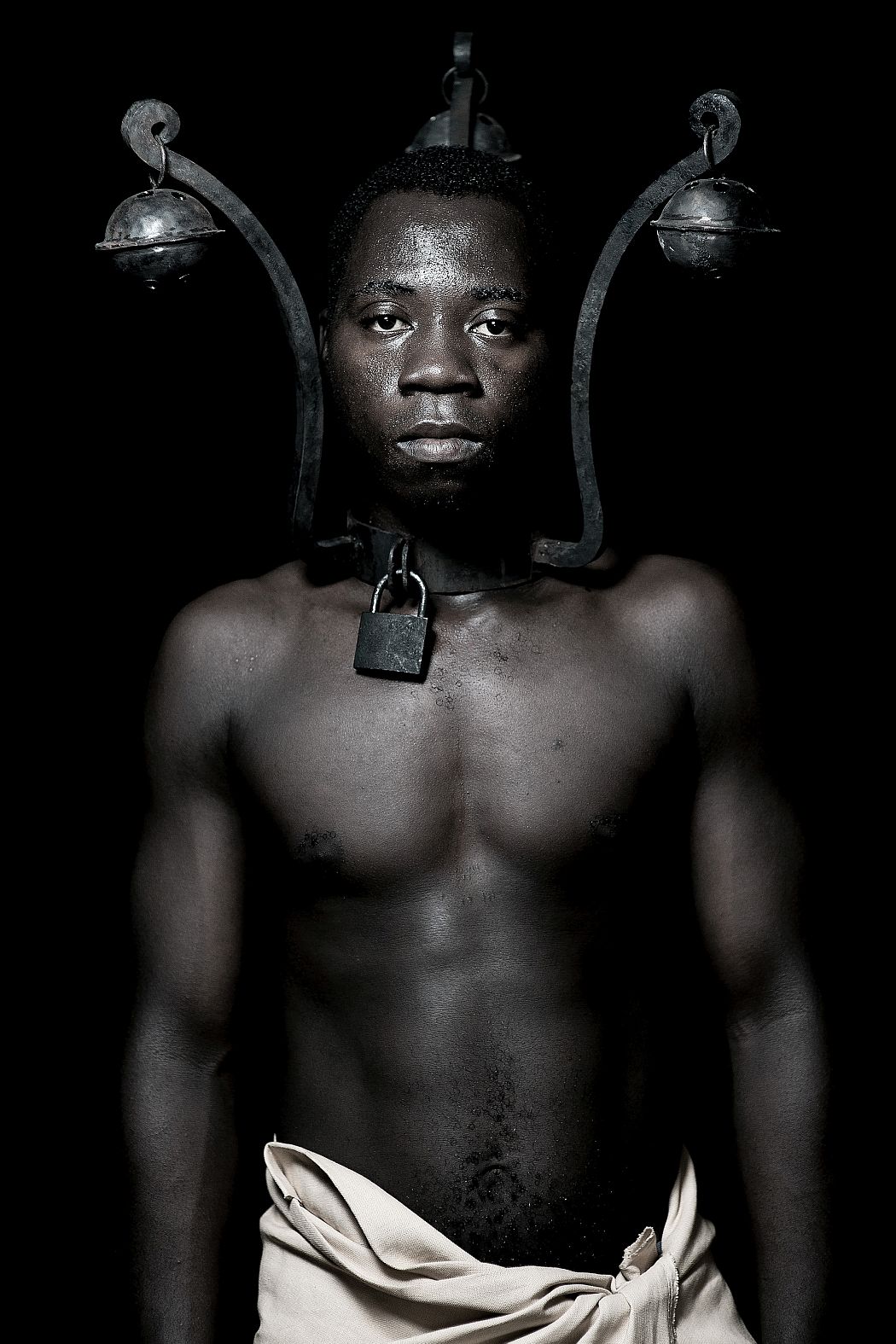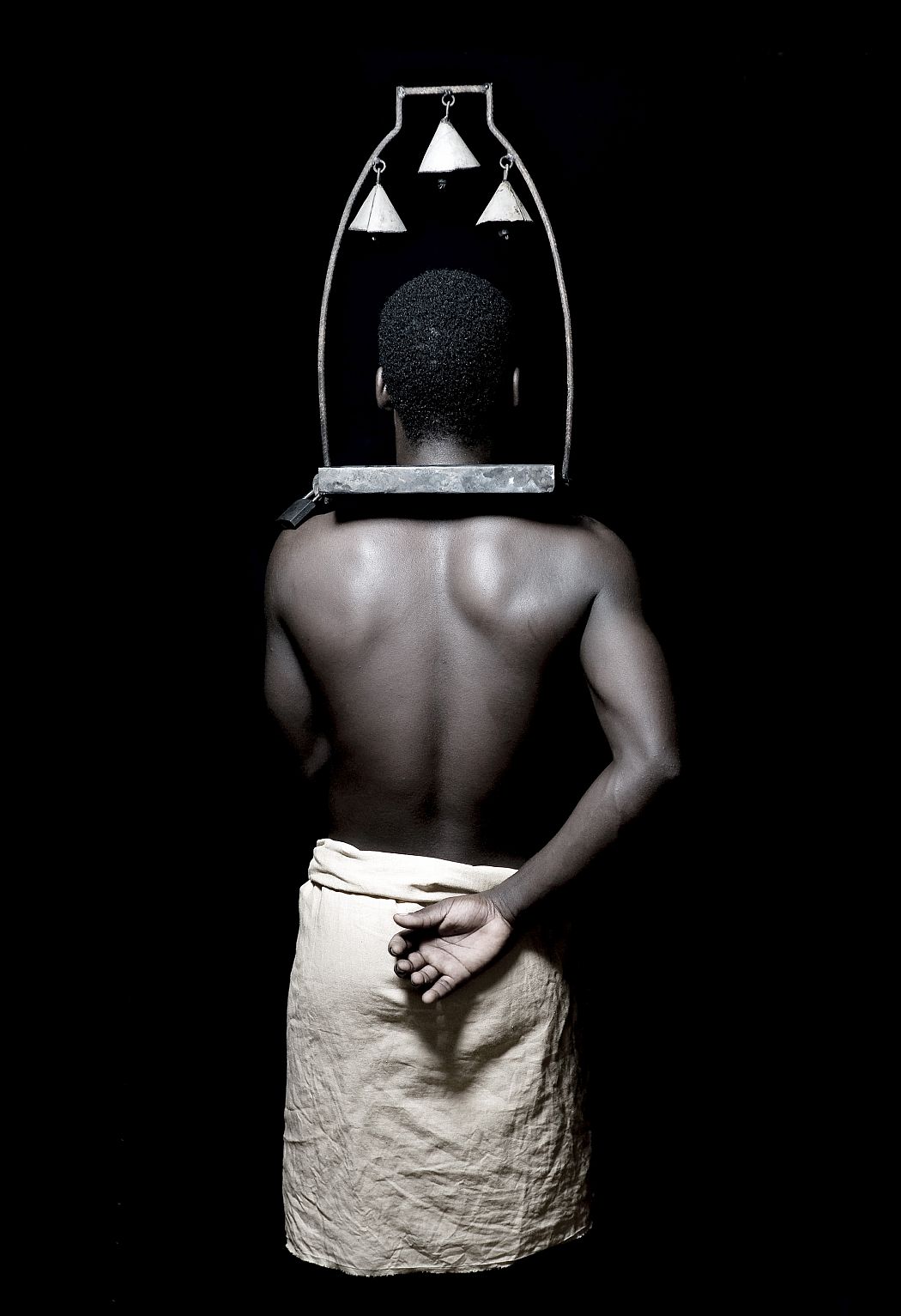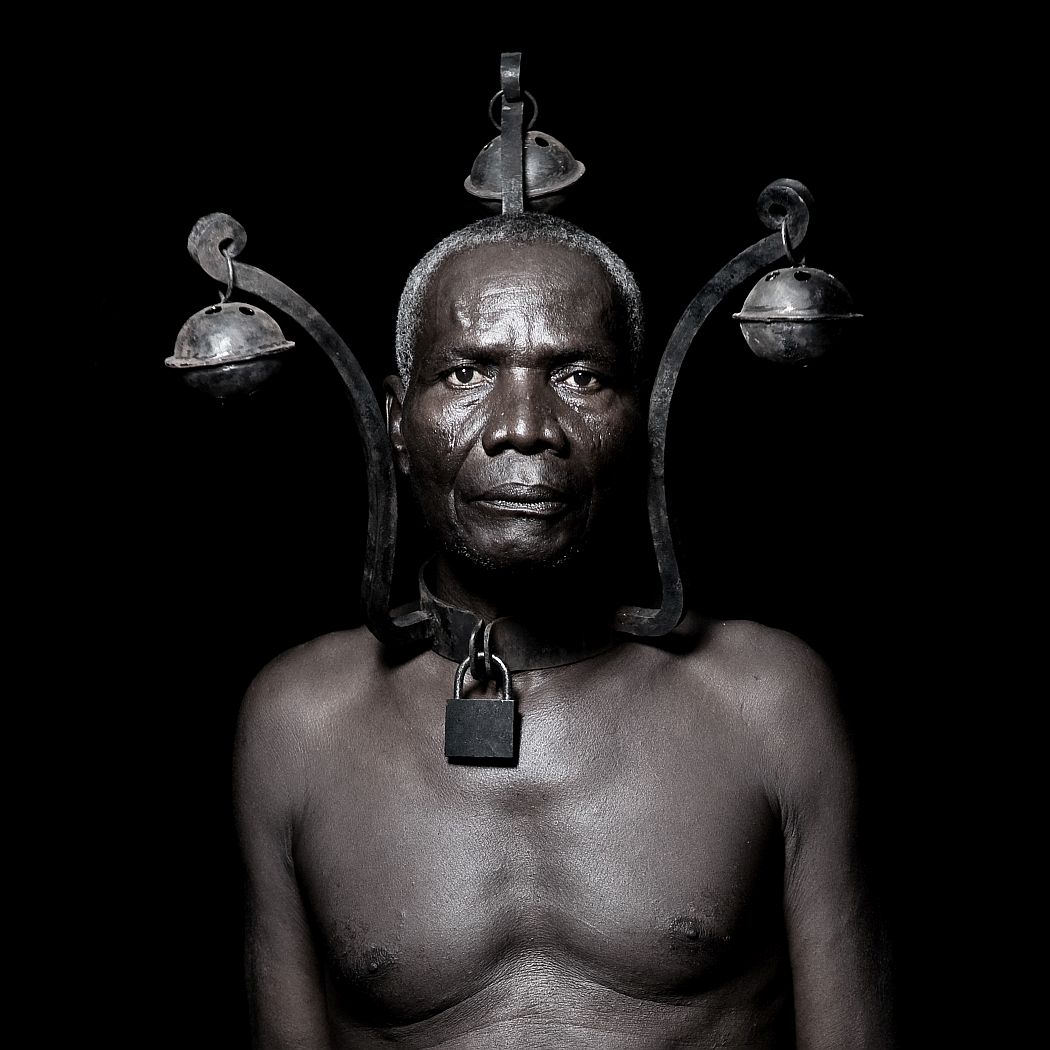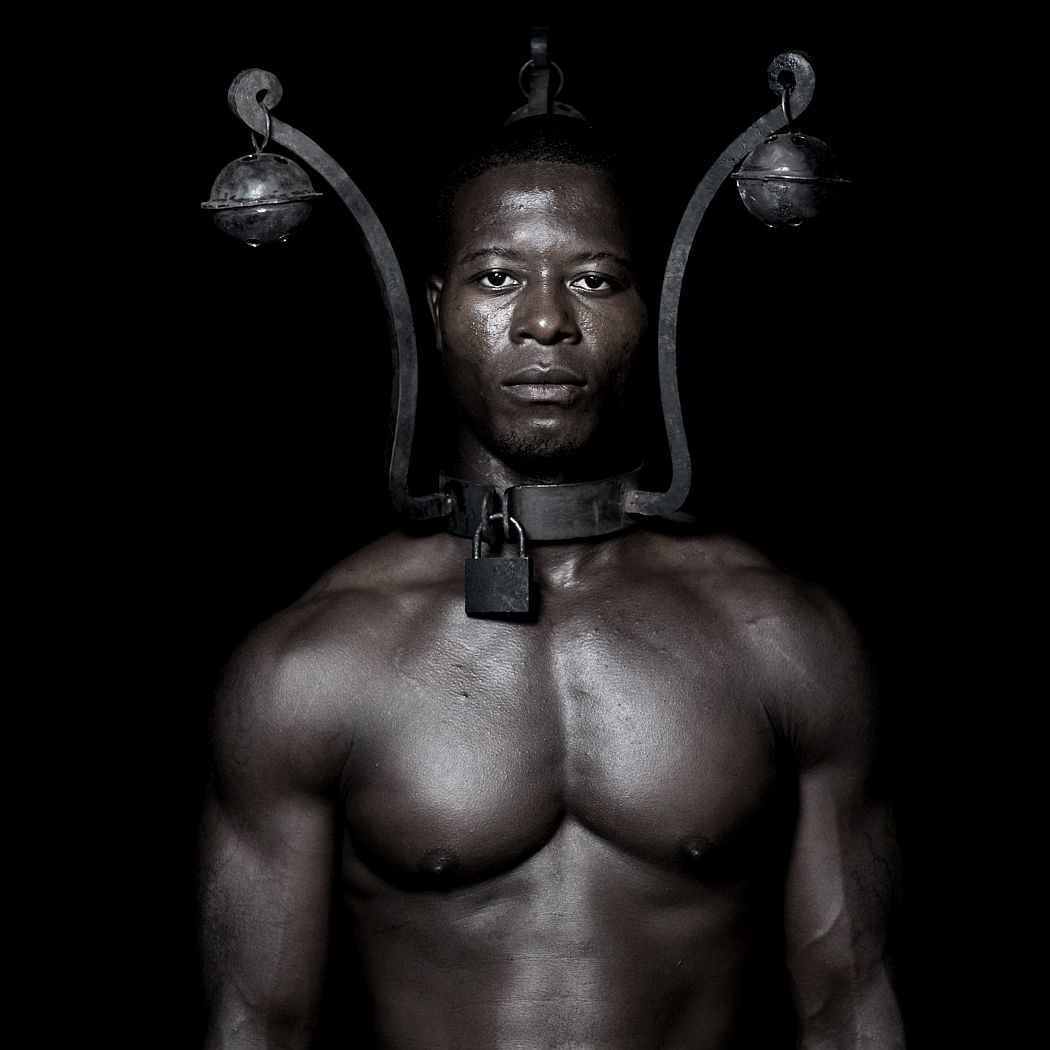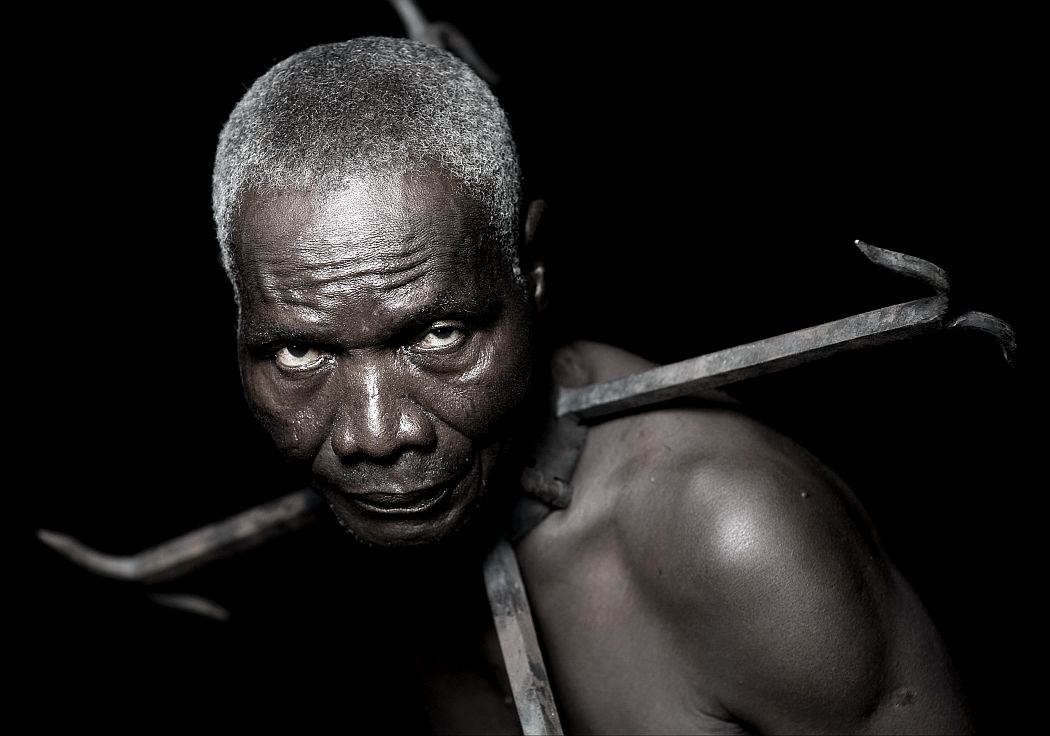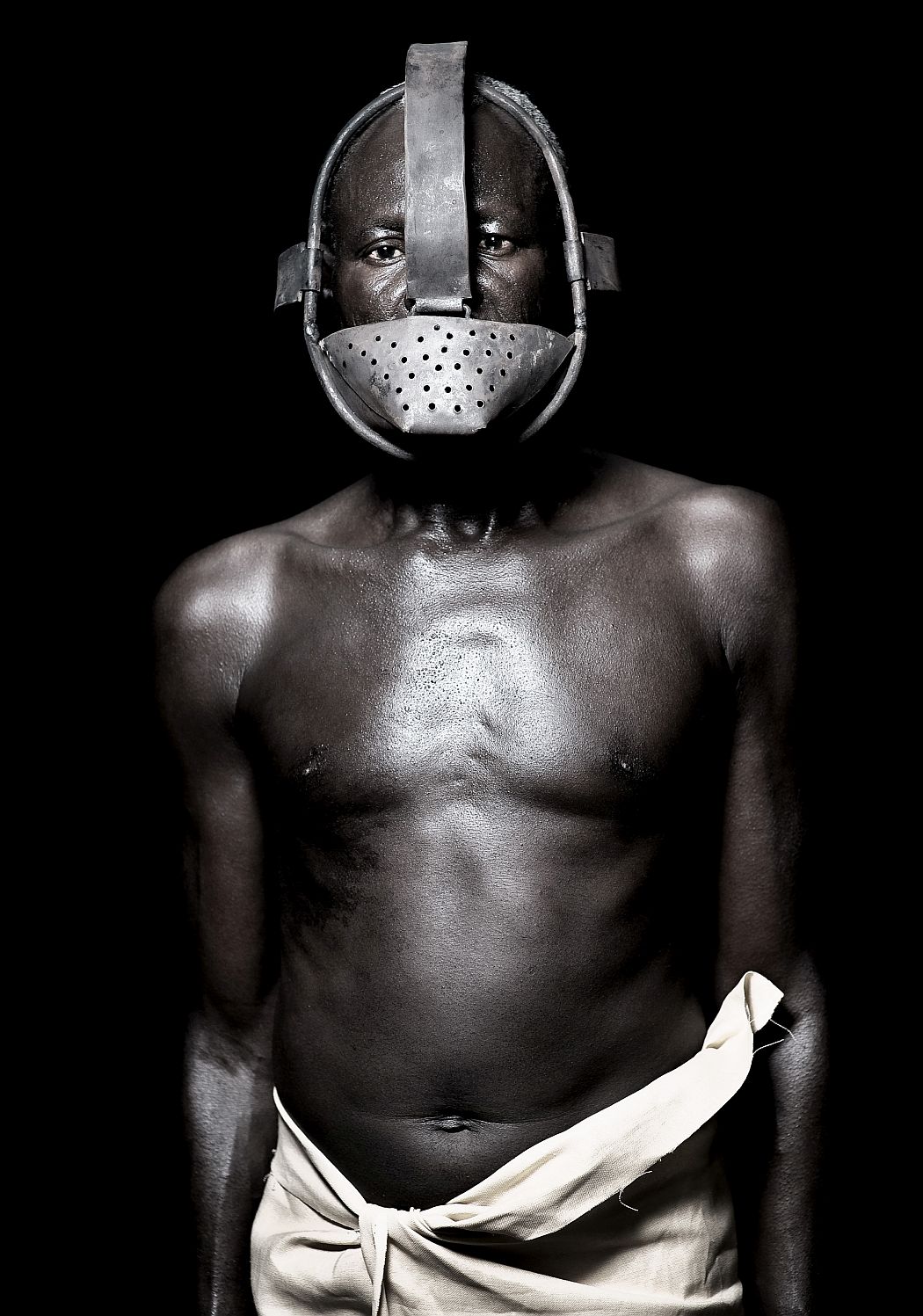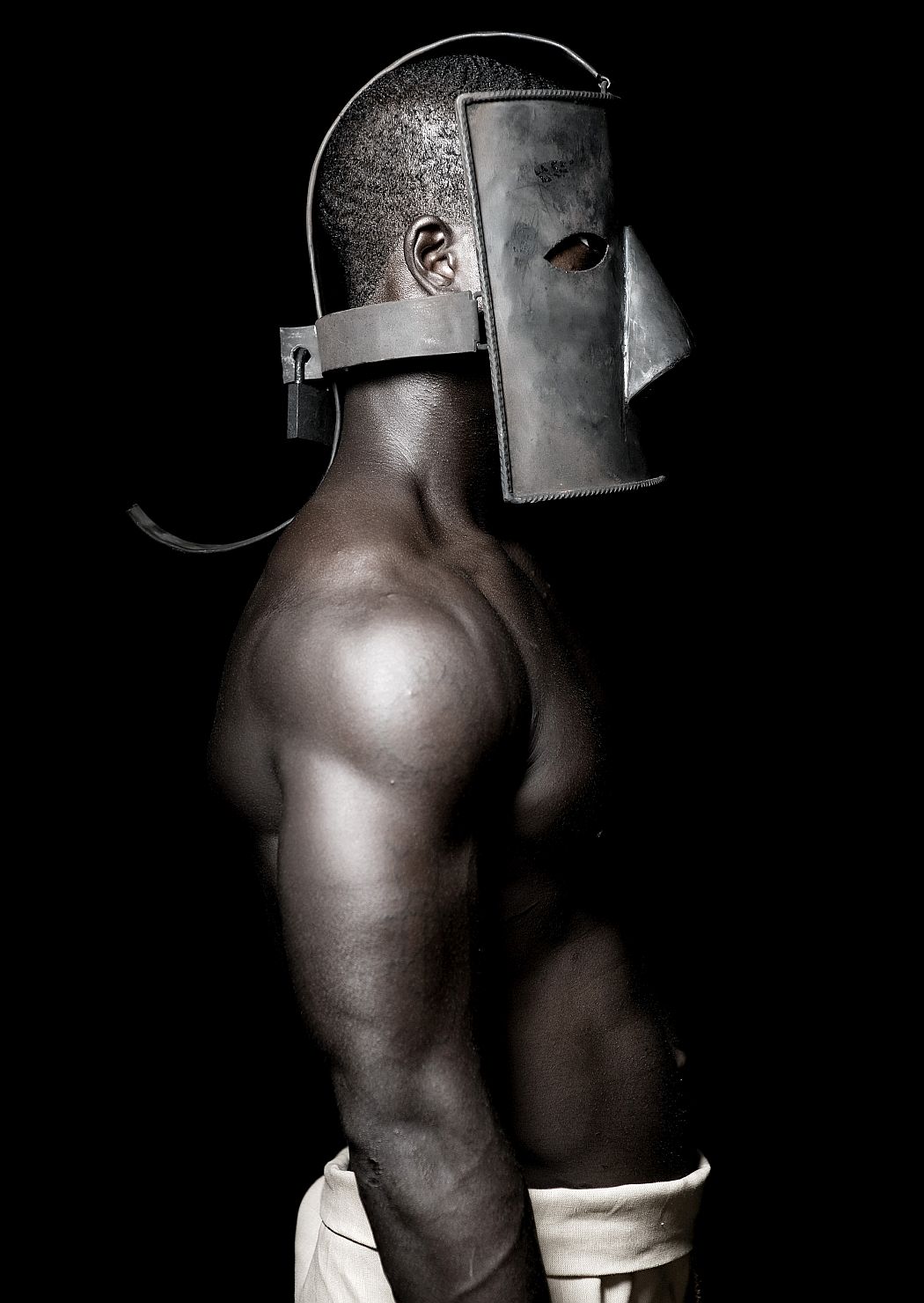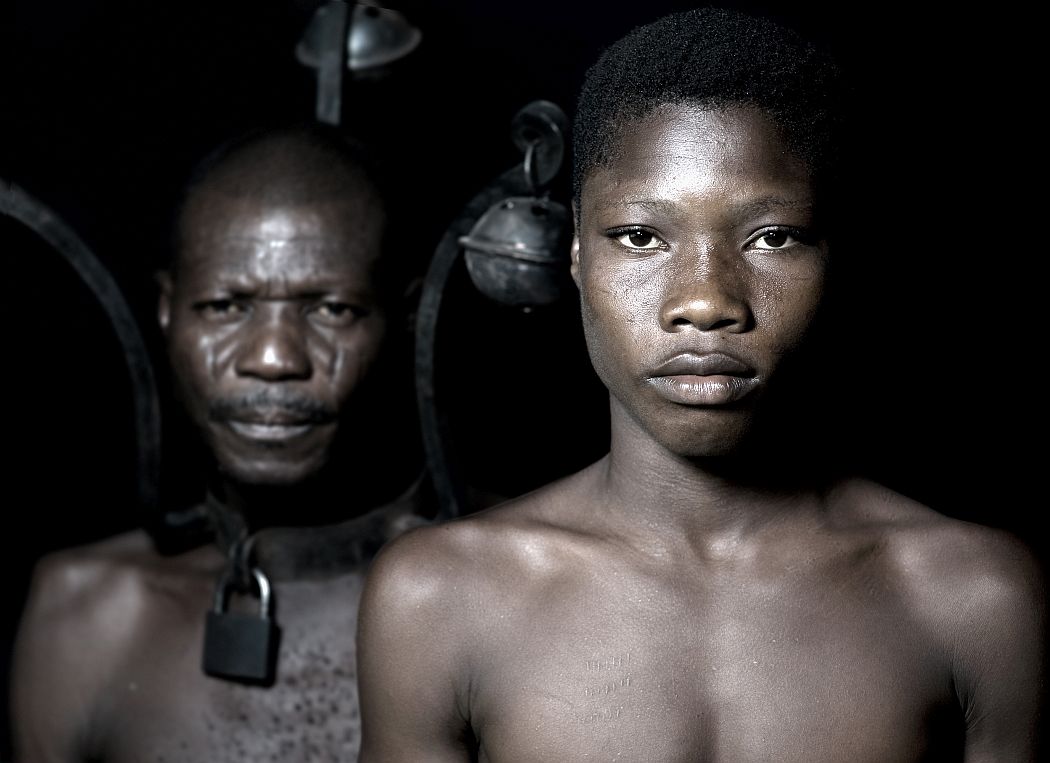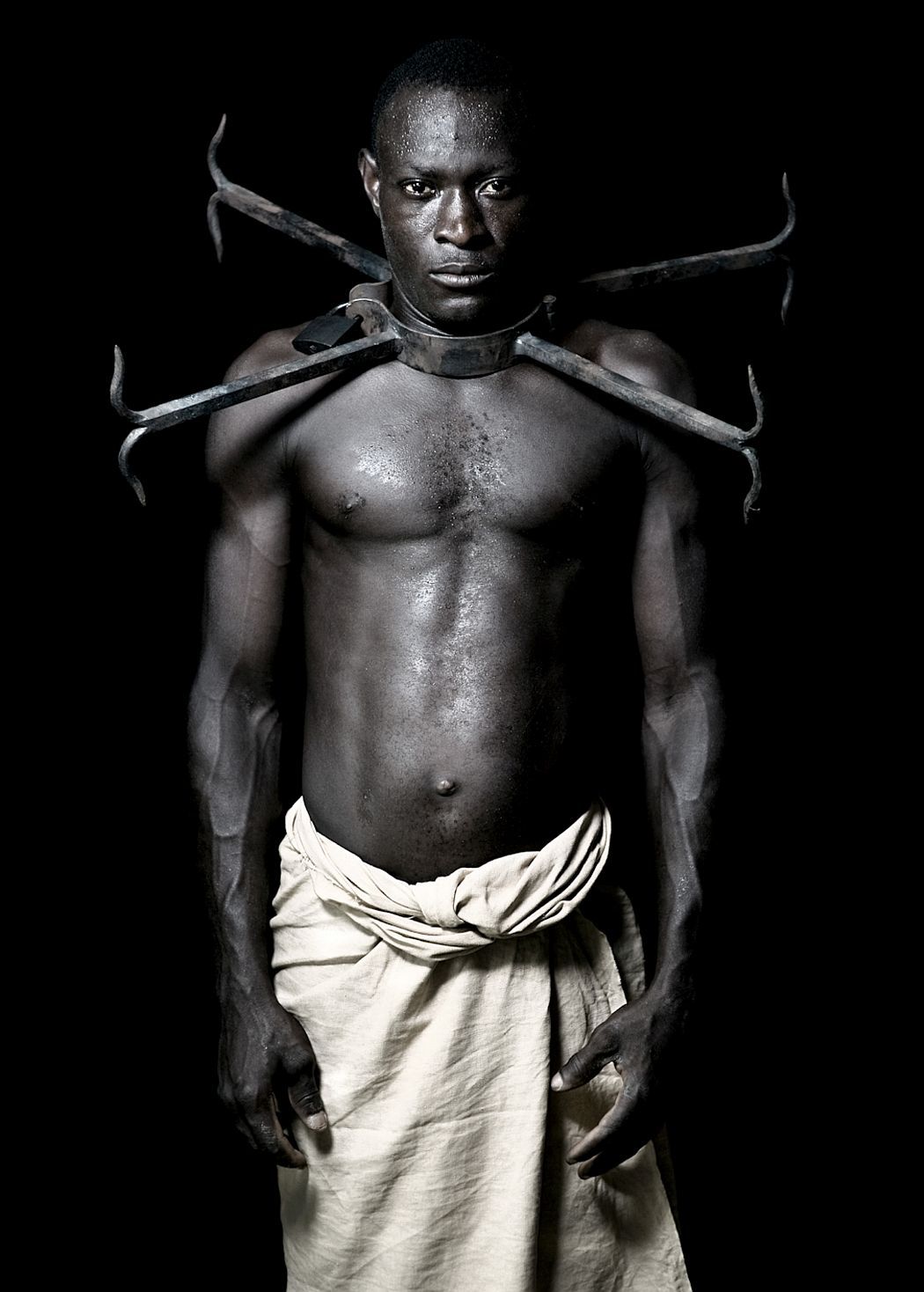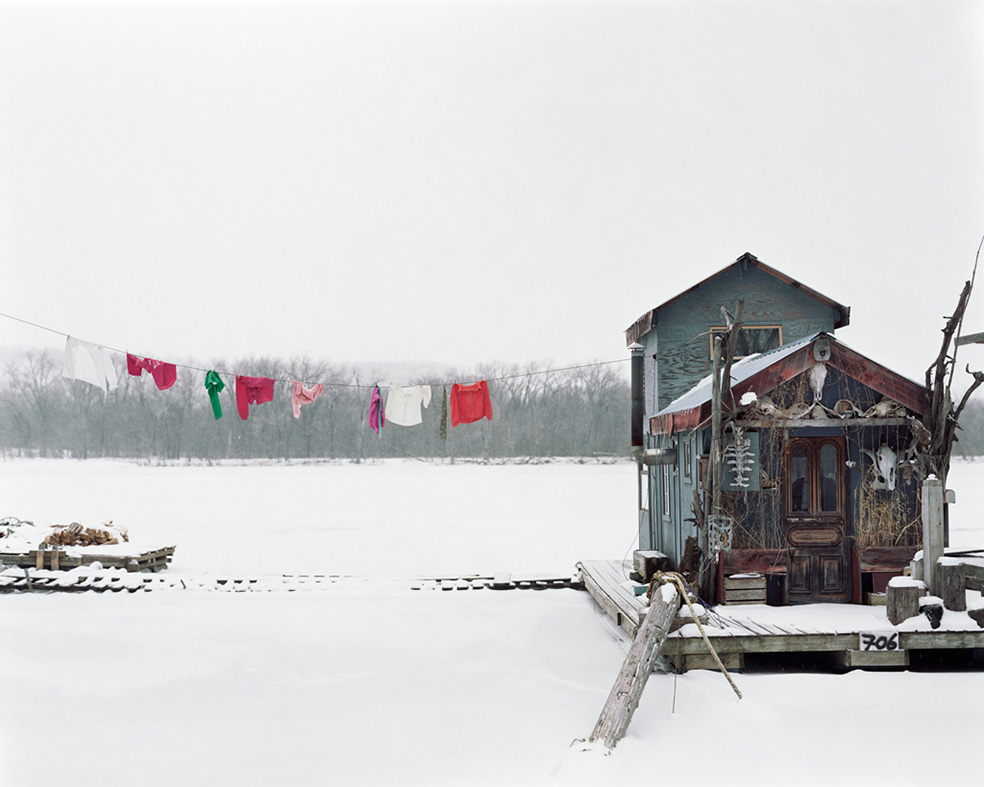Maroon is an English word that originates from the Spanish, “Cimarron”, which means living on the peaks. Between the 16th and 19th centuries an estimated 12 million Africans were enslaved and sent to the Americas. During the many voyages between Africa and the Americas, an estimated almost 2 million Africans died before reaching the “new world”. Communities of free Africans who escaped the horrific conditions of slavery throughout the Americas, lived both literally and figuratively “on the peaks” as fugitives who risked their lives for freedom.
Because Maroons posed a serious threat to colonial society, these communities of free Africans lived in a constant state of danger. Africans, who attempted to flee and were caught, were subject to abject torture inflicted through the use of metal masks, collars and chains. Using the Code Noir Monteiro redrew the plans of five different shackles to punish or discourage slaves of any escape attempt. He studied rare, archival photos and lithographs that depict the iron implements used to punish and ultimately discourage enslaved Africans from pursuing freedom.
Fabrice Monteiro is an emerging artist based in the fields of photojournalism, fashion photography, and portraiture. Born to a Beninese father and a Belgian mother, his childhood is nurtured with multi-cultural. His unique signature style revolves around his passion and love for the heart and the people of his country. Monteiro was not predicted to become a photographer. Photography came naturally to him, first as a professional model, he became aware of the complexity of the composition, the lighting and the posture. Traveling the world inspired him to develop more creative projects, Monteiro was not destined to become a photographer, photography came to him.
Fabrice Monteiro
Maroons
February 4 – March 12
Mariane Ibrahim Gallery
1203 Second Ave, Ste A Seattle, WA 98101
marianeibrahim.com
